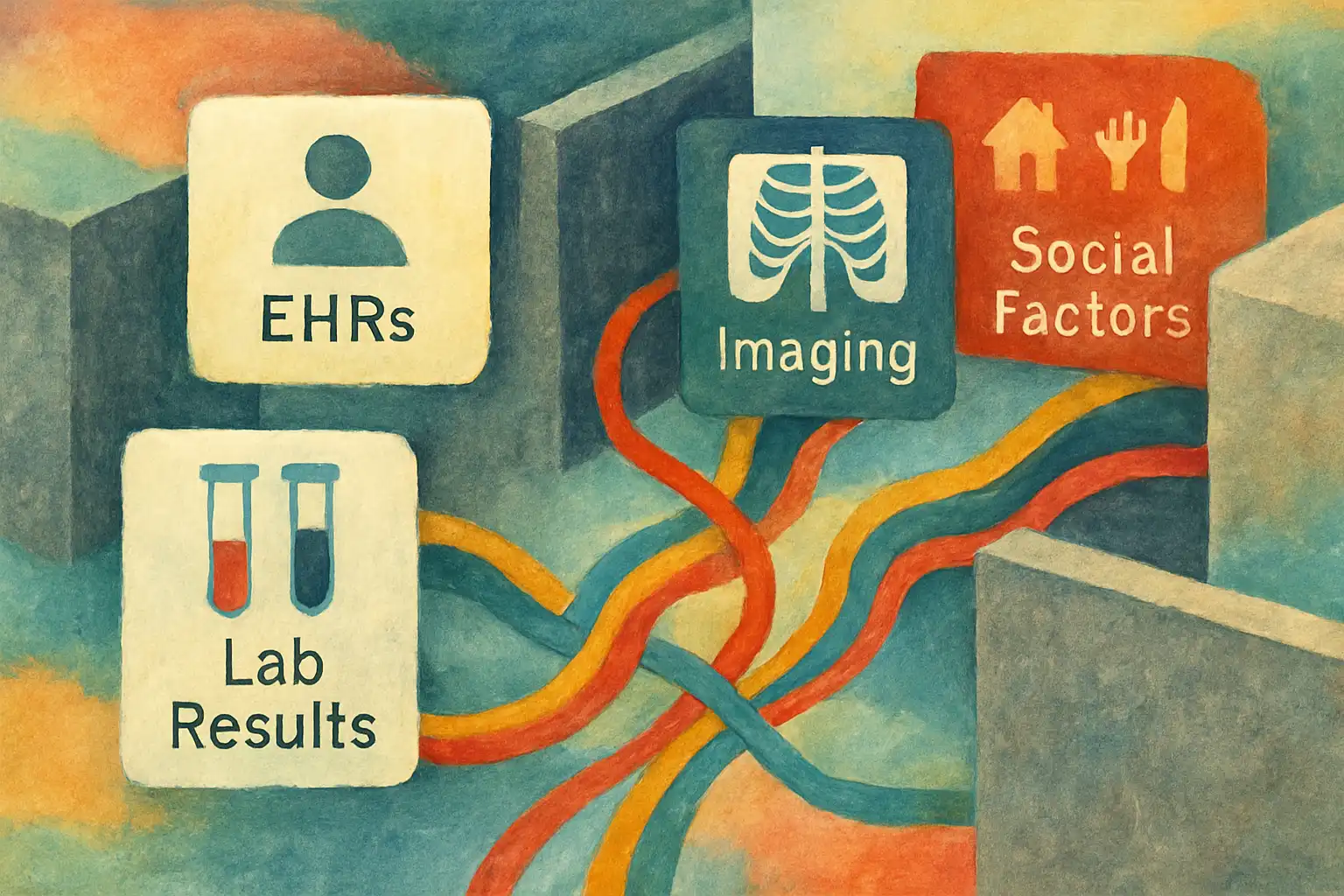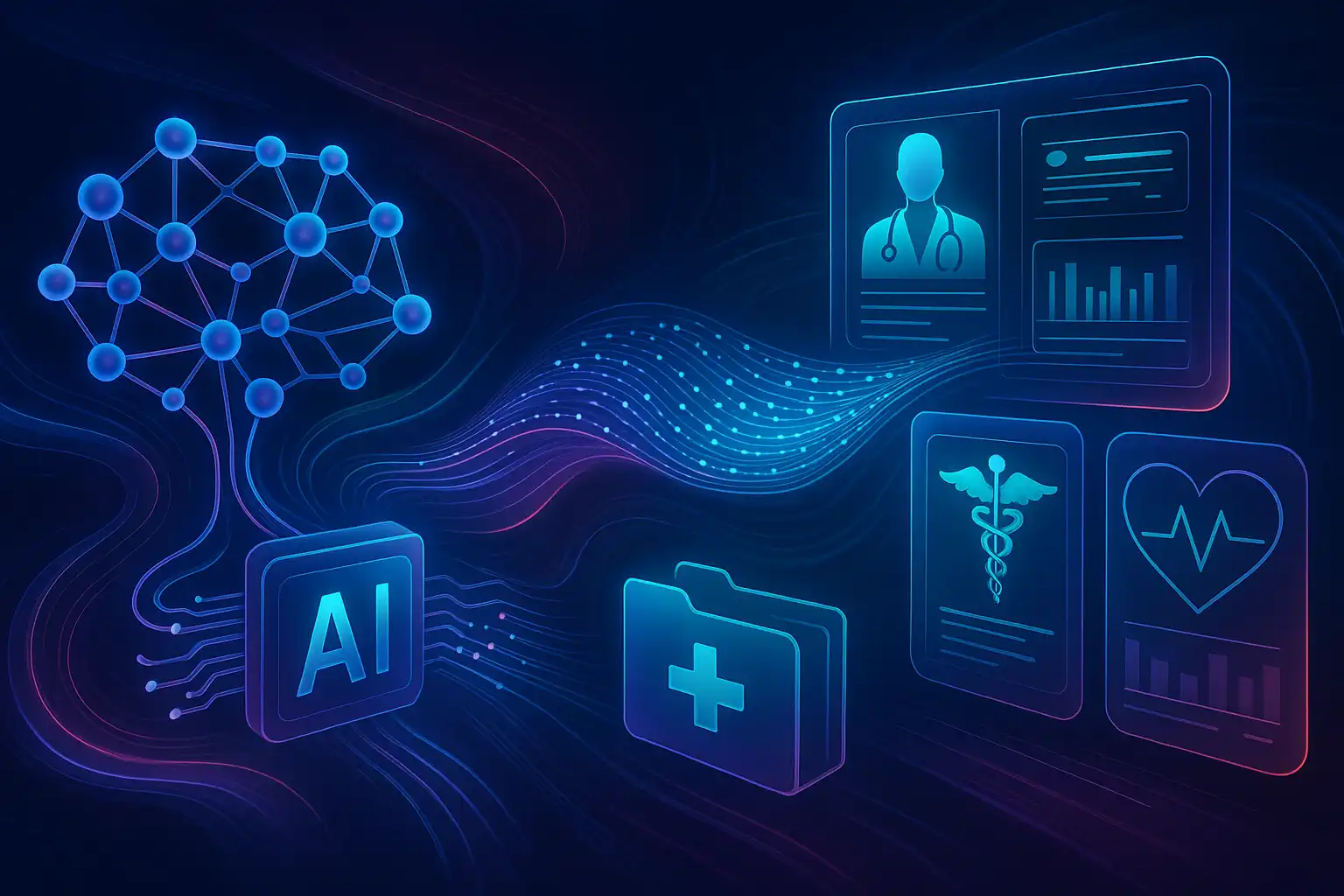
Healthcare data solutions in fabric play a vital role in transforming how providers deliver patient care. These modern tools solve pressing issues like unstructured data, lack of insight into patient needs, and slow processes for analyzing clinical data. Right from the start, these solutions offer a unified environment that brings together all types of healthcare data, making it easy to access, analyze, and use for better patient outcomes. By connecting once isolated data sources, fabric-based systems enable fast, safe, and intelligent healthcare decisions across hospitals, clinics, and research centers.
What Challenges Do Healthcare Data Solutions in Fabric Solve?
Healthcare organizations have struggled with data silos for decades. Patient information comes from many places—electronic health records (EHRs), lab reports, imaging, insurance claims, genomics, and even social factors like income or environment. Each source often uses its own format, making it hard to connect the dots. With fabric solutions, these challenges can be addressed efficiently. Let’s look at the main barriers and how fabric tackles them:
- Unstructured and inaccessible data: Clinical notes, scanned documents, and images are hard to analyze in their raw form. Fabric can turn these files into structured, searchable data sets for easier review and automation.
- Lack of patient insight: Without combining all patient data, providers miss key patterns about disease risks, treatment success, or health trends in specific groups.
- Slow innovation: With isolated data, healthcare teams struggle to use advanced tools like artificial intelligence (AI) for diagnostics, care management, or resource planning.
- Regulatory and privacy concerns: Managing sensitive patient data safely is more complex when files are scattered across systems.
Imagine a patient moving between hospitals, doctors, and specialists. Healthcare data solutions in fabric allow their full history, lab results, and personal context to travel with them, giving every care team member a complete picture in real-time.

How Do Fabric-Based Solutions Work to Integrate Healthcare Data?
Modern data fabric platforms unite information by connecting various data pipelines and analytic tools in a secure cloud environment. The process is both technical and practical, blending new technology with existing healthcare systems. Here’s a simplified workflow:
- Data ingestion: Collect data from EHRs, imaging systems, claims databases, genomics, and non-clinical sources like social determinants of health.
- Data transformation and harmonization: Convert incoming data to common standards, such as FHIR (Fast Healthcare Interoperability Resources), OMOP (Observational Medical Outcomes Partnership), or DICOM (Digital Imaging and Communications in Medicine).
- Integration: Bring together structured and unstructured data into a unified platform, removing duplicates and errors.
- Advanced analytics and AI: Enable real-time analysis and predictive modeling on the cleansed, harmonized data. This step supports identifying high-risk patients, early diagnosis, or personalized treatment planning.
- Secure sharing: Control who can see or use data at every step, ensuring full compliance with privacy laws such as HIPAA or GDPR.
Leading cloud providers like Microsoft Fabric offer end-to-end support for these steps. Their tools connect to services like Azure Health Data Services for FHIR data, integrate with AI language tools to process clinical notes, and prepare data for advanced analytics and care management.
Key Technologies and Standards Used
- FHIR and OMOP pipelines: These industry standards ensure health data is easily shareable and analysis-ready.
- DICOM for imaging: Standardizes medical images for use across systems.
- Azure AI Language: Extracts meaning from free-text notes written by clinicians.
- Dynamics 365 Customer Insights: Prepares and enriches patient data for deeper analytics.
By using these technologies, organizations can move past legacy systems and manual paperwork, speeding up both administrative and clinical processes. For example, when exploring options for improving operational efficiency, some healthcare providers have turned to data science service offerings to build custom data pipelines that connect with fabric solutions.
What Are the Main Benefits of Using Healthcare Data Solutions in Fabric?
Fabric-based solutions are changing the landscape of patient care and research innovation. Here’s why:
- Unified patient view: Providers see a single, up-to-date record for each patient, avoiding errors or double-tests.
- Faster insights: Analytics and AI models deliver real-time alerts on patient risks or operational bottlenecks.
- Personalized and preventive care: Providers can spot trends and intervene earlier for high-risk groups, leading to better outcomes.
- Lower costs: Streamlining data reduces duplicate work, frees up staff time, and helps focus resources where they are needed most.
- Support for research and innovation: Large, clean data sets allow researchers to explore big-picture health issues and test new care strategies.
Consider a hospital using fabric to automate analysis of imaging and clinical notes. By applying custom AI software development services on top of harmonized data, the organization quickly identifies risks, streamlines diagnosis, and tailors treatments to each patient’s needs. This approach boosts both speed and accuracy, modernizing care for everyone involved.
Examples of Real-World Improvements
- Identifying high-risk patients for early intervention based on combined clinical and social data.
- Speeding up diagnostic pathways by merging imaging and lab results automatically.
- Optimizing treatment plans with predictive analytics, reducing hospital readmissions.
- Powering research projects that study health trends across entire populations by safely sharing de-identified data.
With fabric solutions, providers no longer feel limited by their technology or overwhelmed by paperwork. Instead, they gain a clear, flexible foundation for innovation and better patient care.
How Does AI Enhance Healthcare Data Solutions in Fabric?
Artificial intelligence is transforming how fabric platforms deliver value to healthcare. By processing massive volumes of structured and unstructured data, AI can quickly uncover patterns that human experts might miss. Some practical AI-powered use cases in healthcare fabric include:
- Clinical decision support: AI suggests likely diagnoses or flags urgent cases by scanning patient histories and symptoms.
- Natural language processing (NLP): Converts doctors’ free-text notes into structured information for easier analytics.
- Multimodal analytics: Combines imaging, text, and lab data for more comprehensive patient insights.
- Cohort building: Identifies patient groups for targeted treatments or research studies.
For clinics aiming to maximize their operational effectiveness, leveraging AI-powered business efficiency services can help them extract timely insights from fabric-enabled data, improving both clinical and administrative performance.
Practical Tools and Brands for AI in Healthcare Fabric
- Microsoft Fabric: A leading platform for secure, scalable healthcare data integration.
- Azure Health Data Services: Supports FHIR and DICOM standards, making interoperability simpler.
- Dynamics 365 Customer Insights: Offers advanced analytics for patient engagement and care management.
When these AI tools work together within a fabric framework, healthcare providers not only modernize care but also stay ready for the future of digital health.

Frequently Asked Questions (FAQ)
What is a healthcare data fabric?
A healthcare data fabric is a unified environment that connects, harmonizes, and manages health data from multiple sources. It breaks down barriers between systems, making data accessible, secure, and usable for analytics and AI.
Is it safe to use fabric-based solutions for sensitive patient data?
Yes, leading fabric solutions follow strict privacy standards like HIPAA and GDPR. They offer advanced security controls to make sure only authorized staff can access sensitive data, protecting patient confidentiality at every step.
Which data standards are supported?
Modern fabric platforms use common healthcare data standards such as FHIR, OMOP, and DICOM. These standards ensure seamless data sharing, transformation, and analytics across different healthcare systems.
How can fabric-based solutions help personalize patient care?
By integrating data from all sources, fabric helps providers see the full patient journey. With AI-driven analytics, care teams can identify individual risks, design tailored treatment plans, and track results over time, leading to better health outcomes and higher patient satisfaction.
